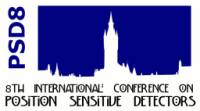Speaker
Dr
Mercedes Rodriguez-Villafuerte
Description
A microPET system for small animal studies is currently being developed at Instituto de Fisica, UNAM. The main goal of this project is to build a cost-effective benchtop system that could be suitable for research purposes. The basic design uses off-the-shelf components and is being assembled using in-house built readout circuits and NIM electronics. In this work we are presenting the initial tests of the first detection modules that have been assembled. The modules are based on pixelated scintillator LYSO crystal arrays coupled to position sensitive photomultiplier tubes, with a resistive chain readout system. Pulse conditioning is performed with nuclear instrumentation modules, and its digitization is performed with a fast analog-to-digital data acquisition board. The uniformity, cross-talk and aperture function of the photomultipliers have been measured. The modules are able to identify individual crystals (out of 400) with a 4 to 1 peak-to-valley ratio. The measured energy resolution of 22Na spectra in individual crystals are between 7 and 15%, the dead time of the system is between 17 and 42 μs depending on the source volume, and the resolving time is 1.16 +/- 0.01 ns. The detection modules were used to obtain the first tomographic images of a 30 g mouse with 18F sodium fluoride. The design and characterization of the system includes Monte Carlo simulations of the detectors.

